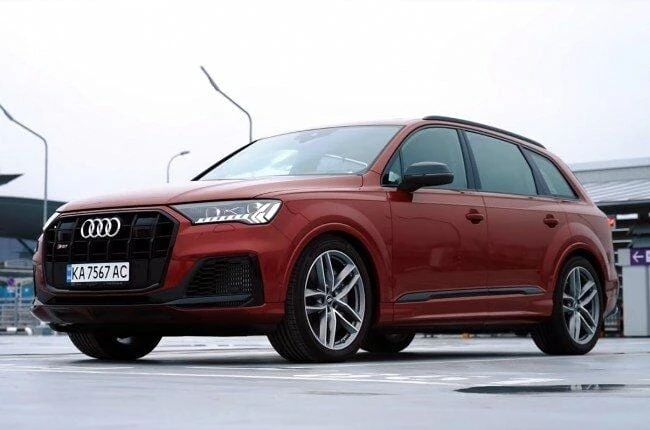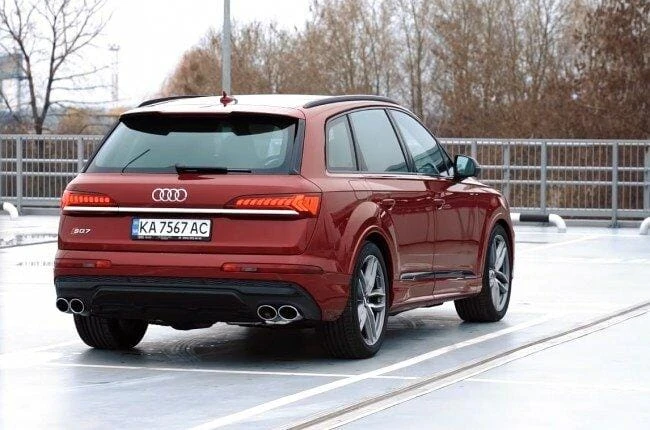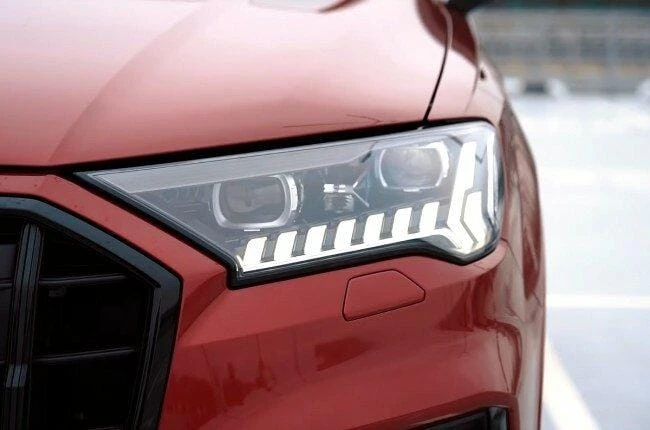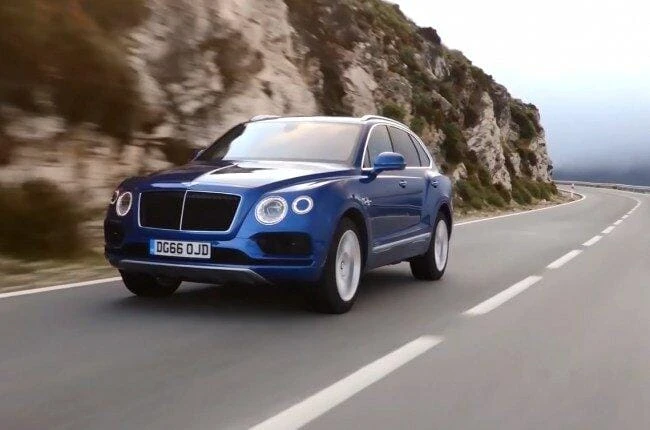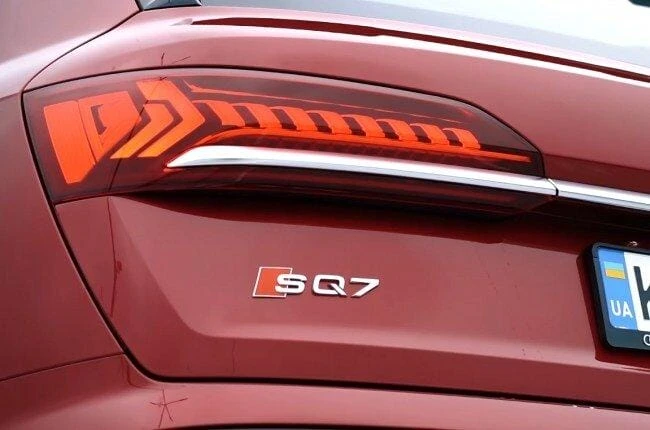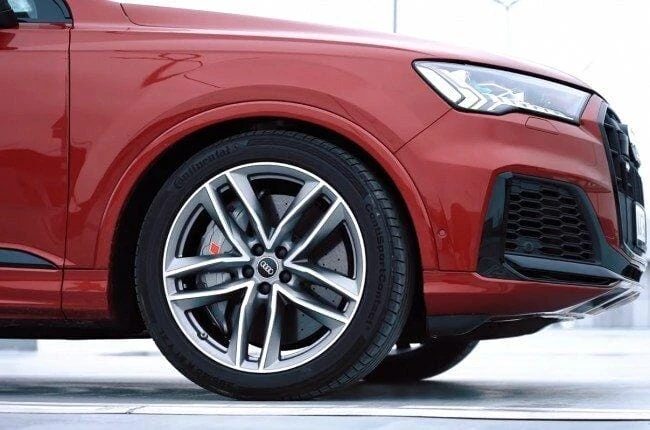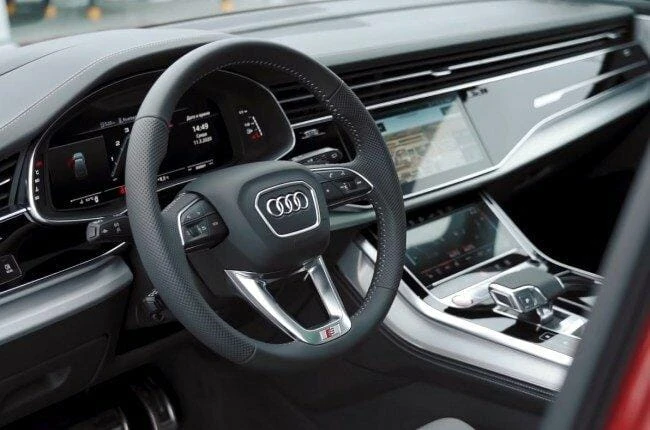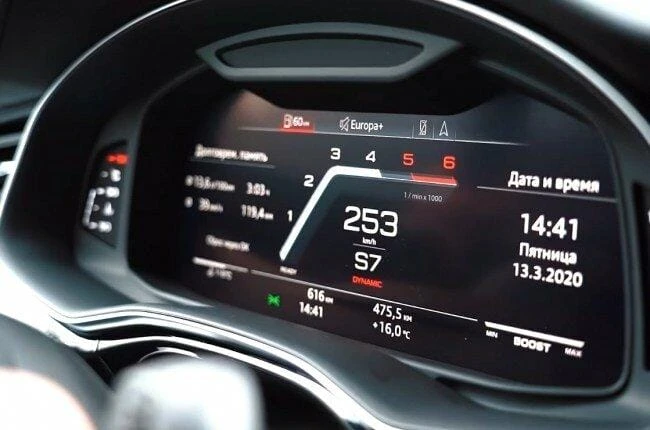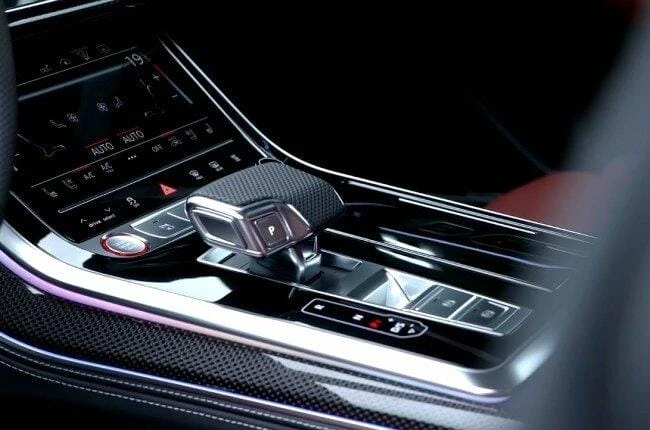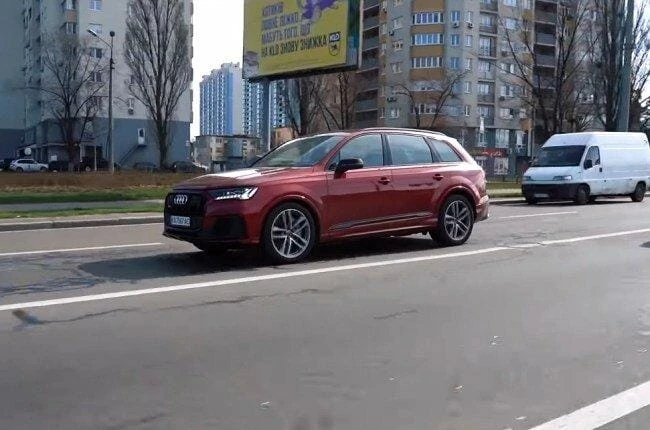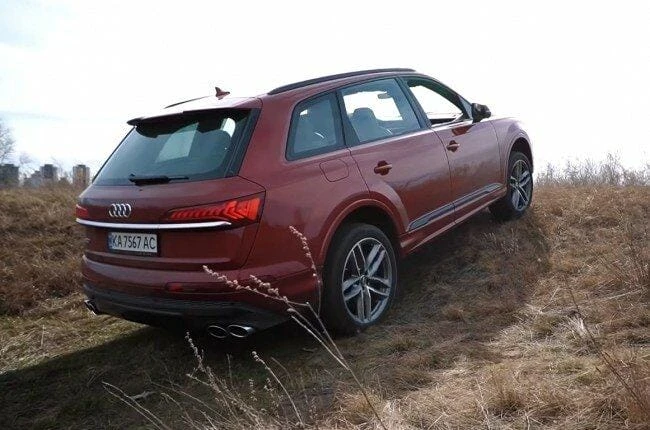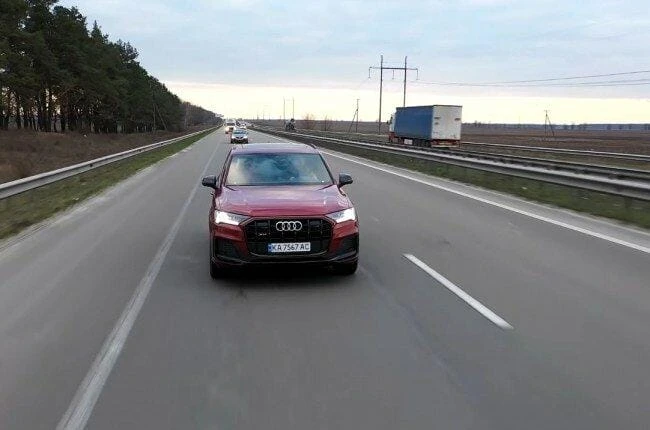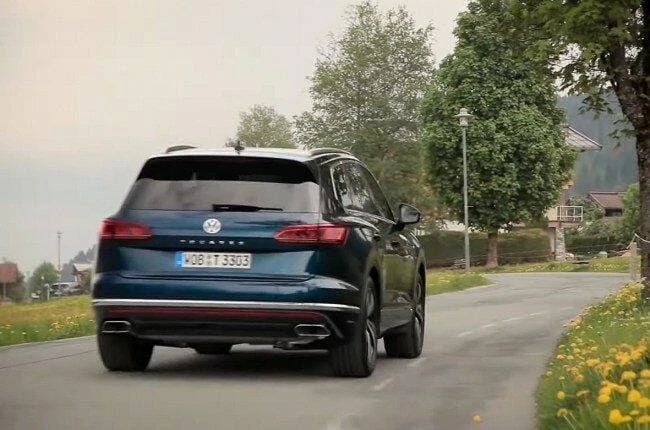Audi SQ7. When you need something special
Today I'm testing the Audi SQ7. This is not a simple car, because it is equipped with the most powerful serial diesel engine in the world. The price of such a crossover in Ukraine now starts from 80 thousand euros.
I will say right away – SQ7 is one of my dream cars. But today we will talk not only about him. This test will not be like the ones you are used to. Today we will do without sharp starts and serious off-road, in addition, there will be no long discussions of design and interior design.
Instead, I will try to answer all the questions of those who choose a crossover in this class. Those who want something more than the traditional 200-300 hp with. I will also try to compare the crossover with its main competitors and give a lot of new arguments for arguing about which car is still better.
Instead of an introduction
If you are indifferent to SQ7, then you probably know absolutely nothing about it. And they certainly didn't ride it.
You can be a die-hard fan of the Mercedes-Benz brand, you can be a member of the BMW “sect”, or you can not notice cars other than Porsche. But at the same time, one cannot help but respect this Audi crossover. Because it's not just an Audi. And not just “eska”.
Recently, the nameplate “S” in the brand's model designations is increasingly turning into a kind of “pseudo-sport” with a promising appearance. Now, more and more often, under the hood of such cars, you can find more compromise engines, usually representing the top-end forcing of quite “civilian” engines. The S-versions are more and more willing to give way to the sporting glory of the truly combat performances of the RS.
But with the Audi SQ7, things are quite different.
The highlight is the engine!
In 2016, VAG engineers developed a unique engine. They gave the world the most powerful and economical production diesel V8 ever installed in a passenger car. Triple turbocharging made it possible to remove 435 hp. with. and 900 Nm from an engine displacement of 4 liters.
Of course, three superchargers may not seem like such an impressive result if you know that the BMW with a 3.0-liter diesel engine has four of them. But in Audi, one of the superchargers is electric, it can spin incredibly fast (by the way, this is also the world's first mass-produced supercharger with such a device). Due to such an innovative device, the diesel engine is practically devoid of turbo lag and is ready to give all the moment from 1000 rpm, and it also demonstrates an indicator of efficiency that is simply incredible for its power.
You need to make a reservation right away: when you pay more than 100 thousand euros for a car (including additional options), fuel consumption is definitely not a key parameter for choosing a car. Therefore, the indicator here is interesting simply as an impressive fact. After all, at first it was difficult for me to believe in him. And it even seemed that the on-board computer was lying.
During the entire test, my average diesel fuel consumption was 14 liters per 100 km. True, it should be noted that during the entire two weeks of the test on this SQ7, the pace of movement was far from the average (constant acceleration from zero to 100 km/h, up to 200 km/h and even up to 250 km/h). It is difficult to restrain oneself when such a motor is under the hood!
For example, on a Porsche Cayenne with such a ride, the consumption would be at least 20 liters per “hundred”. But this is not the main thing. If you drive in a calm mode on an unloaded road (and I tried it anyway), then you can easily meet 6.9 liters per 100 km. This consumption is comparable, for example, with the Mercedes-Benz GLE 250, equipped with a 2.2-liter diesel engine. But the difference in power and torque parameters here is colossal.
(By the way, if you compare fuel consumption with that of gasoline competitors, you can calculate that for 100 thousand kilometers on fuel you can save up to 6 thousand euros. It seems a little, given the total cost of the crossover, but, on the other hand, this is still one argument in favor of Audi.)
I was also surprised why such a wonderful engine was not installed first in Bentley or at least in Porsche, but immediately in Audi. After all, back in 2016, the Audi SQ7 received the title of the fastest serial crossover equipped with a diesel engine.
True, initially there were plans to equip Porsche with this engine, and already in June 2016, the Germans announced the release of the fastest diesel sedan: the Panamera became it. The Cayenne could very well be next, but the height of dieselgate forced the Germans to reconsider their plans. Then diesel engines disappeared forever from Porsche prices, and it's somehow not customary to remember the fastest diesel Panamera in the VAG concern.
But in some miraculous way, in 2017, the world saw the first diesel Bentley Bentayga. The dynamics of this car was identical to those of the Audi SQ7 – 4.8 s to “hundreds”. But in order to at least formally call the much more expensive Bentley the fastest, the electronic speed limiter was simply moved from 250 km/h to 270 km/h. Unfortunately, they failed to make Europeans trust diesel again, and in 2018 Bentley removed the diesel version of the Bentayga from its prices.
Today, this superengine is installed on only five models of the concern. Recently, the coupe version of the SQ8 has been added to the pioneering SQ7; the diesel Bentley Bentayga is still available in some markets, and the Audi A8 60 TDI can already be ordered in Europe. Don't forget the new VW Touareg V8 as well. Many did not even expect that the most powerful diesel engine would receive a Volkswagen crossover, but the fact remains.
By the way, although this V8 is the most powerful production diesel engine today, it cannot claim the status of the most powerful in history. You probably remember that the first generation of the Q7 crossover was equipped with a 6.0-liter V12 with 500 “horses” and 1000 Nm. This power unit fourteen (!) years ago accelerated the Audi Q7 of that time in 5.5 s to the first 100 km / h. The Germans were even going to put such a diesel engine on the R8 sports car, but then changed their minds: VAG considered the project not very promising, because this engine was too big, heavy and voracious for Europe, and in the USA then, in principle, they didn’t really know what a diesel was.
European environmentalists also had questions about the emissions of the pre-styling SQ7, so our car has not only a neck for the AdBlue neutralizer, but also a “mild” hybrid system. It is thanks to her that the start of the engine during the operation of the Start / Stop system is carried out very smoothly; the system can also turn off the engine when coasting. The “mild” hybrid is installed on the regular Q7 and even on the RS Q8.
But this technology is especially relevant here, since the system runs on the same 48-volt network that powers the electric supercharger and active stabilizers (which still cannot be ordered for a simple Q7). There is also no way to add a sports limited-slip differential in the rear axle, carbon-ceramic brakes and a sports exhaust system with “well-almost-not-fake” tailpipes to the standard Audi Q7.
Issue price
Actually, the Audi SQ7 has been an icon for true connoisseurs of diesel units for the fifth year already. I do not deny that I also belong to them, and the SQ7 was my dream even in the pre-styling version. A dream, to put it mildly, unattainable, because then they asked for 120-150 thousand euros for it.
But the world has turned upside down once again, and now our configurator has a starting price of 81,000 euros, and for 100,000 euros, I easily assembled quite a solid package. Surprisingly, the Audi SQ7 has ceased to be exclusive to fetishists, competing even for relatively “civilian” versions of classmates.
The basic “eska” is about 20 thousand euros more expensive than a regular Audi with a 3.0-liter engine. But you overpay not only for the engine. The basic package already includes matrix headlights, 20-diameter wheels, leather trim with Alcantara, power seats, a rear-view camera, external and internal S-line packages, as well as quite a few other little things for which you would pay extra in any case. regular Q7. So the overpayment for the engine will cost a little less than 10 thousand rubles.
In addition, nice bonuses have been added to the SQ7 in the form of a sports exhaust system and larger brakes. The test car is equipped with an even more advanced brake system (carbon-ceramic) for a surcharge of as much as 10 thousand euros.
On the other hand, the Audi RS Q8 is a completely different echelon, and even at this price it is much more affordable than its direct competitors. For example, the latest BMW X5 M in a similar configuration will cost another 20 thousand euros more, the price of the Porsche Cayenne will easily exceed 200 thousand, and the Mercedes-Benz GLE 63 is not yet officially available (but I have no doubt that the Mercedes will be expensive). It turns out that Audi is again offered at the best price.
Features of the exterior and interior
The Audi SQ7 still has virtually no special features that distinguish it from the regular Q7. You can only notice small nameplates and a slightly retouched false radiator grille. The rest you can order in a standard crossover. For lovers of modest aristocratic charm, this is good news, because you will not stand out from afar.
But you will almost certainly be heard! Compared to regular Q7s and their sham exhaust system, this is an “honest” exhaust. But at all without tricks in Audi, probably, they can no longer. Firstly, of the two pipes on each side, only one is real. It's better than nothing, but why not make all four real? Wait a little and you will know everything.
After all, the second moment is much more interesting. Under the rear bumper, special speakers manufactured by Ebersp?cher were placed here. This is a company that, in addition to exhaust systems, is also known for the production of autonomous heaters. So, it is these “banks” that are not connected in any way with the exhaust circuit: only wires going to the membranes go inside. That is, the synthetic sound of the exhaust is now created not only for passengers, but also for passers-by.
Returning to the question posed above, I will answer that I found three reasons for using such a synthetic system. Firstly, it's still a diesel, and therefore even the V8 does not sound very nice. Secondly, there are so many different filters in the exhaust system that the engine hardly pushes exhaust gases through them, not to mention the sound. Well, the third reason can be called legislative restrictions on noise from cars in Europe. So manufacturers have to come up with different ways to satisfy everyone, and Audi went down that path.
At the same time, the sound in the cabin is also artificial, but very pleasant – with a low, self-confident velvety timbre. Even at the peak of power, it cannot be called loud, and there are no tears when switching under load.
I don't want to talk about the salon at all. For a long time I tried to find out what could be truly unique here (that is, not available to buyers who choose the usual Q7). For example, sports seats or an Alcantara ceiling cannot be counted as such options. And the special dashboard mode, like in the RS, is just a picture on the display, nothing more. The only interior differences between the hotter versions of the SQ7 and RS Q8 are the carbon inserts (instead of aluminium) on the front fascia. But for some reason, this distinctive option was not ordered in our test car.
Speaking about convenience and ergonomics, we can say that everything is on top. After all, this is VAG, and they don’t do it differently. As for interior design, it is unlikely that anyone will accuse designers of lack of taste (as is the case with BMW, for example). True, the front seats in Audi are still inferior to the Bavarian ones. The back profile is not very comfortable for tall people, there are fewer settings, and the side stops are not elastic enough. The headrest is not adjustable, and the backrest in the upper part does not “break”.
But the second row in the Audi already puts the BMW on the shoulder blades. After all, the SQ7 is almost 15 centimeters longer. Therefore, there is noticeably less legroom in the back row in the BMW, and the landing is less comfortable than in the Audi, due to the more upright back. Although the seats themselves at the Bavarian crossover are softer. In Audi, the rear seats move back and forth, the backrest angle is adjustable, and there is plenty of free space.
The Cayenne and Touareg brothers in the rear offer almost the same amenities, because the crossovers are built on the same platform. True, they, like BMW, are shorter by 10-15 centimeters, but this almost does not affect the second row.
If we compare the Audi with the Mercedes-Benz GLE, it is worth noting first of all two facts: the backrest in the Audi is more comfortable, but luxury electric adjustments are not available for rear passengers. The ventilation of the rear seats, as in the GLS, is also absent. Although they could add: yes, the SQ7 is shorter in length, but the niche is almost the same.
Let me remind you that if you have a special requirement for the second row, you should look after yourself SQ8. There's no third row, and there's even more legroom. I also note that the price of the base SQ8 is now only 500 euros more expensive. But, in my opinion, it is still much more exclusive in terms of appearance (it is distinguished by a rear monolight, frameless doors and other decorative elements). Although from a technical point of view it is the same car.
Dynamics and acceleration
But according to the results of measurements (on our fuel and the temperature outside the window is ten degrees Celsius), the test SQ7 with launch-control showed 4.86 s! Yes, this is a win. True, the lower the indicator, the more difficult it is to see it in real conditions: the indicated result was the best of six measurements. So, let's face it, it's not particularly stable.
Without launch-control, we got a result of 5.8 s from one pedal, which is also very good. Yes, and it is worth emphasizing that after reaching the first 100 km / h, the dynamics, to put it mildly, continue to please. Acceleration from standstill to 200 km / h took exactly 20 seconds (100-200, respectively, lasts about 15 seconds). The maximum speed, according to the specifications, is limited to 250 km / h. And even at this speed, the car feels stable: the crossover stands up well in a straight line.
Technical nuances
If you sometimes want to ride “sideways”, the Audi SQ7 will not give you such an opportunity. To some, this situation may seem boring, but, on the other hand, it is many times more reliable. And as the RSQ8 records show, this “does not affect the speed.” It's all about the Torsen differential with a 60:40 torque split in favor of the rear axle. With minimal rear wheel slip (and on your initiative too), the mechanical differential instantly takes torque and redirects it to the front axle, returning the car to a flat trajectory. Disabling the ESP system does not affect this picture in any way. The same Torsen is installed in the Touareg V8. But the BMW X5, Mercedes-Benz GLE 53 and Porsche Cayenne have multi-plate clutches between the axles.
The top ZF box of our SQ7 deserves special mention as well. This is an eight-speed “automatic” with the index 8HP95. Such a gearbox is installed on the “monster” Jeep Grand Cherokee Trackhawk, as well as on the Rolls-Royce Phantom with a 6.75-liter engine. Agree, such a “company” inspires confidence. The maximum torque that the gearbox can withstand reaches 1000 Nm. Although, perhaps, you still need to be calmer on the roads, not forgetting that the engine output is 900 Nm.
In addition, the diesel V8 is easily chip-tuned: Stage 1 without any modifications to the hardware will increase the output of the engine to 500 hp. with. and 1000 Nm. But it seems that this is the case when there is no need for refinement: there is more than enough torque here. And the nature of the crossover does not particularly provoke a very aggressive ride. Gearshifts themselves are hardly noticeable here even under full load. That is why I am simply delighted with this “diesel” drive, this calm and confident, always sufficient return of the power plant. Without “hysteria” and unnecessary emotions from the shocks of the box and exhaust lumbago.
Firstly, such discs and pads can easily be enough for you for 100 thousand kilometers. During this time, with an engine of this power, you will have time to wear out two sets of conventional discs and four sets of pads. And if you take into account the cost of parts on official services, it will cost you almost 6 thousand euros. Secondly, up to 5 kilograms of weight is saved on each wheel, which means better grip on bad roads and more comfort while driving. Thirdly, it's just beautiful (especially if you order calipers in a contrasting color); also carbon-ceramic rotors do not leave a black coating that then settles on your rims.
But there are also disadvantages that manifest themselves primarily on the roads. With such brakes, leaving not only on the off-road, but even on a simple primer is undesirable. A small pebble that falls into the wrong wheel can destroy the brake disc. What is fraught with big expenses.
On the other hand, sometimes you want to feel these 900 Nm, available from 1000 rpm, somewhere in the mud! For those who love off-road, this can sound really tempting. And besides, to overcome difficult areas, the air suspension is able to increase ground clearance up to 22 centimeters. Yes, the indicator is not comparable with the 30 cm clearance in the previous generation VW Touareg, but you can’t call it insufficient either. Do not forget also about the overhangs: they are quite long here.
It is necessary to mention a few important points on the suspension. The pneumatic system in the SQ7 is already in the basic configuration, that is, free of charge. But when ordering, you can choose between conventional and sports pneumatics. The difference is primarily in clearance and stiffness. With a sports suspension, the ground clearance of the crossover is 15 millimeters lower. It was installed on our test car. In addition, our SQ7 is also equipped with optional 21-inch wheels, although 20-inch wheels are offered for the basic version (by the way, “ceramics” also fit in them). Active stabilizers were not ordered in our crossover, just as the rear sports differential was not ordered.
So, in the city on such disks and with a sports air suspension, the SQ7 crossover seems too shaky to me. No, it is not hard, but shaky (this is especially felt on small bumps). On the big bumps it's not so bad. I think it’s not even about the size of the disks, but about the sporty setting of the air suspension. Therefore, I would not recommend this option. I am sure that standard pneumatics will easily cope with the most unpredictable tasks, but it will be much more comfortable to move around the city.
There is, however, a universal solution – these are active stabilizers. With them, the car in Comfort mode will behave much more imposingly, working out the unevenness of the asphalt more pleasantly. And in Dynamic mode, such stabilizers allow the crossover to stand better on the trajectory, minimizing rolls. By the way, such stabilizers are now offered as an option by all competitors. But here is the cost of this equipment at Audi … They also included in the package a rear sports differential that no one needed, we will set the total price tag at almost 7 thousand euros. For comparison, in the Cayenne and Touareg, active stabilizers will cost almost half as much.
And what about the competitors?
As I already noted, accelerating to 200 km / h in 20 seconds is a very solid indicator. That's almost twice as fast as a 200 km/h Audi Q7 with a 3.0-litre diesel, but six seconds longer than the RS Q8 version. But the gasoline Porsche Cayenne S with the Sport Chrono package and a 2.9-liter biturbo engine shows almost identical results in dynamics. This, by the way, is one of the direct competitors of the SQ7, if you are not obsessed with diesel. Today it is also the most expensive competitor of Audi.
In order to more objectively compare Audi with other crossovers, I have defined a conditional list of the minimum required options (in order to compare just such configurations, and not basic versions). Among them were air suspension, 20-inch wheels, 3D cameras, metallic paint, leather trim, power adjustments, heating, ventilation and memory for the front seats, as well as matrix headlights and a keyless entry system. In fact, these are the options without which we cannot talk about some kind of “luxury”.
Due to the presence of disks of the required diameter, air suspension and matrix headlights already in the basic version, the SQ7 in our conditional configuration “fits” in 89 thousand euros.
Porsche Cayenne
Cayenne in the S version only starts from 102 thousand euros, and with our conditional package of options (as well as the Sport Chrono package, which gives similar dynamics to Audi), it will cost already 118 thousand. After all, for air suspension, diode optics, and even for 20-inch wheels will have to pay extra. As a result, Porsche was 30 thousand more expensive.
In this case, apart from the prestige of the brand, you get a very similar car, assembled from similar components (and even in the same factory).
For Porsche, you can additionally order exactly the same options: carbon-ceramic brakes, active stabilizers, rear wheel steering and a sports differential in the rear axle.
But do not forget that of all the competitors of the test crossover, the Porsche Cayenne S is perhaps the most sportily tuned: it has a noticeably sharper steering wheel and sharper reactions. But at the same time, even on 20-inch wheels, the Cayenne is slightly inferior in terms of comfort to our Audi (equipped, let me remind you, with 21-inch wheels), although it clings to the asphalt noticeably tighter. The marketers of the VAG concern made sure that these models compete with each other to a minimum. So it can be summed up in this form: the explosive and aggressive nature of the Cayenne is opposed to the calm but self-confident Audi SQ7.
And it's not just about lighter weight, sporty settings and a gasoline engine. Between the axles, Porsche has not a mechanical “self-block”, but a clutch that connects the front axle. This means that the Cayenne can redistribute up to 100% of the torque to the rear axle, which really adds even more excitement to its behavior. In Sport Plus mode, it can even be slightly “drifted” in a turn, throwing the rear axle into a light, controlled drift with slipping.
BMW X5
Relatively close in power diesel from competitors is available only on the BMW X5 M50d. Here, with a 3.0-liter displacement, there are four turbines, which allows the engine to produce 400 hp. with. and 700 Nm of torque. This is the most powerful 3.0-liter diesel engine in the brand's lineup, and it is the Bavarians that install it today in the 5-series sedan, the X7 crossover, and also in the flagship 7-series. Acceleration to the first 100 km / h in this X5 takes half a second longer than the Audi, and is 5.2 seconds.
At the same time, the price of the basic configuration of such an M50d is almost equal to the price tag of the SQ7 (about 82 thousand euros). BMW already “in the base” offers 21 discs and thrusters of the rear axle. Nevertheless, additional equipment for the crossover turned out to be more expensive, and therefore a BMW in our conditionally “reference” configuration already costs almost 93 thousand euros.
As for the driving habits of the new X5, during the test we found that in the back of the G05 its goal is to give comfort rather than adrenaline. Especially if the car is equipped with air suspension, which was not previously offered for this model at all. On the move, the X5 suddenly feels softer and even more rolly than the test Audi, although the steering is sharper. And BMW tries its best to compensate for the more modest dynamics with an incredibly loud and aggressive (for a diesel car) exhaust, which, by the way, is also complemented by active external speakers. It’s also worth saying that with such power, even M-brakes are starting to be missed, and, alas, there is no opportunity to order carbon-ceramic brakes.
Mercedes-Benz GLE
Even though the GLE recently had a 4.0-litre V8 petrol version of the 580 (with power and performance comparable to the SQ7), I think our diesel escu is more accurately compared to the 3.0-litre version of the GLE 53 AMG.
Yes, acceleration to the first 100 km / h in 5.3 seconds is not as impressive as that of Audi, but in terms of the GLE philosophy with the AMG designation and the special performance of the 4MATIC + drive, it is still closer to the test SQ7 than the imposing 580 created for America version.
The base price of the AMG 53 is the lowest in the class and amounts to 75,000 euros. If we complete the crossover with options that we considered the minimum necessary, we will get a cost of 87 thousand euros. That is, Mercedes-Benz turns out to be the closest competitor for Audi in terms of price.
In terms of road behavior, this Mercedes-Benz is noticeably different not only from the SQ7, but also from other crossovers in this class. Here, perhaps, the most daring and aggressive exhaust settings and accelerator pedals, giving a sea of emotions. In Sport Plus mode, the “undermining” from a place and the reaction to pressing the pedal is not worse than those demonstrated by the Porsche Cayenne. However, after a sharp jump forward and acceleration to 70 km / h, the dynamics of the GLE subsides slightly. And at this moment, if we had a drag racing competition, Audi, which was behind at the start, I’m sure, would have confidently swept past.
The suspension of the GLE 53 turned out to be the softest (the crossover is equipped with “pneumatics” and 20-inch wheels). In addition, thanks to the traditionally high landing and center of gravity, accelerations are more noticeable here. But the clutch in the drive makes it easy to put the car into a skid.
Volkswagen Touareg
For the sake of sporting interest, we decided to include the flagship Volkswagen model in the comparison list. Indeed, relatively recently, it was with the same engine as in the test Audi that it became available on our market.
The cost of VW Touareg V8 starts at 84 thousand euros. It's even more expensive than Audi, but the crossover does offer more options as standard equipment. Nevertheless, if we add our standard set to its package, such a Tuareg will cost already 89 thousand euros. The same is asked for Audi, which is not good news for Volkswagen.
But if you continue to add more and more options to the Touareg and SQ7, then Volkswagen will still be cheaper, and the gap between them will grow along with the increase in equipment (due to the higher price of additional equipment for Audi).
findings
When we compared the Audi SQ7 with its competitors, a lot of words were said about the dry numbers of acceleration and consumption. But believe me, with the help of a calculator it is impossible to understand what this “diesel drive” actually is.
All the ecstasy of driving the SQ7 crossover lies not in the performance, but in what exactly you feel when all the incredible 900 Nm of torque are already available to you from 1000 rpm. When you can easily accelerate and decelerate without changing gears, because the motor allows you to do this without problems. Moreover, giving at the same time the feeling that you are driving a powerful electric car.
You need to try it, you need to feel it well yourself. And then you will definitely love the Audi SQ7. And you will never compare this crossover with anything else, because it has no analogues.
Not because he is the best. And because he is special.
